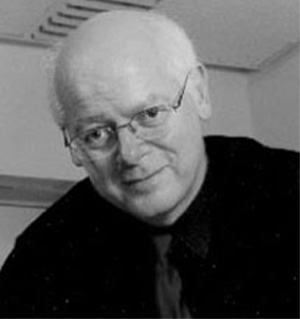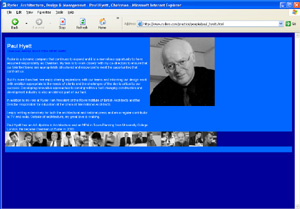

|
Paul Hyett , the current RIBA President, opened
his lecture with an account of his career to date. He had an unorthodox
route into architecture. After a spell in the merchant navy and aviation
insurance, he trained at the Architectural Association and worked
for Cedric Price and then Alan Baxter, before setting up his own practice.
Whilst in practice he gained an MPhil in town planning at the Bartlett,
and taught architecture, planning and urban design in Germany and
the UK. Besides his responsibilities at the RIBA, he is also a Chairman
at Ryder, and Director responsible for education at the Union of International
Architects.
After working for Cedric Price, Mr Hyett left in 1981 to start his
own practice as a sole practitioner and had some success with buildings
such as the BRE Fire Terminal. From this experience he learned the
essentials about running an architectural practice and explained that
it is crucial not to become over dependant on one source of income.
Ideally, no job should be bigger than one third of a practices turnover,
and no single client should be either.
Since his appointment as RIBA President earlier this year, Mr Hyett
has caused some controversy in the architectural world with his comments
about the future of the profession in this country. He reiterated
his stance here ("there are far too many small practices") and went
on to explain why he believed this was the case.
The basis of his argument is that the nature of architectural commissioning
is undergoing radical change as a result of evolving political ideas.
Since World War II, the vast majority of public buildings have been
designed by architects employed directly by the state, a situation
that, with the advent of PFI and other changes, is now no longer the
case. Mr Hyett believes that the architecture profession must speed
up it's transition from welfare state to market economy and laments
that "There has been no acknowledgement of political changes in the
profession. Mr Hyett recalled that in his student days it was the
Greater London Council or Hamden Housing Department that were the
aspirational places to work, rather than the individual based private
practices today. This shift is symptomatic of the political changes
that have taken place and he advisees us to always follow social history
as it has a large amount to do with the context we're building in.
Mr Hyett then went on to compare the situation in the UK with that
of the USA, which has operated under the market system for many years
and has consequently had different procurement methods. In the recent
past UK firms have relied solely on commercial work such as, offices,
warehouses and shops for their work, but US firms have traditionally
relied upon 40% of their workload coming from the state. One of the
consequences of this is that it times of economic recession UK practices
are badly hit as commercial work dries up, whilst in the US, firms
simply turn to the state to cover the gaps in workload as government
spending tends to rise at these times. Accordingly there are now many
very large US firms with a broad range of skills and experience in
all fields, whilst UK firms are badly lacking in skills outside the
private sector.
The skills built up in Local Authority Architecture departments are
being lost as work is now outsourced and those with experience either
retire or become consultants. With the huge program of school and
hospital building now underway the community needs architects to be
able to respond to this challenge, but the majority of firms with
the capacity and experience to do this tend to be American. Mr Hyett
therefore sees the UK architecture profession loosing out to the US
and states an example of 300 staff from US firms now based in London
which will take £5.4bn of work in the next ten years. On typical shortlist
for the 35 or so £150m-£350m PFI hospitals schemes now in the pipeline,
four of the six firms will be American.
Another aspect to this problem was identified by Mr Hyett as he explained
that there is very little reciprocal trade with UK working in the
US. This is due to the fact that US Architects enjoy protection of
function by Law, as Lawyers and Doctors do in this country, but not
Architects. The ARB only affords Architects "protection of title"
which is much less powerful. Mr Hyett expressed his belief that the
ARB should only validate education to act as a quality mark, rather
than an entailment to an arbitrary title.
After the lecture Mr Hyett agreed with a questioner from the floor
who asked "should the RIBA therefore be about excellence, rather than
competence?" |
 |
 Paul Hyett...
Paul Hyett...
 ... is Chairman at Ryder...
... is Chairman at Ryder...
 .. and RIBA President...
.. and RIBA President...
 ...and a Director at the Union of
International Architects.
...and a Director at the Union of
International Architects.
|


